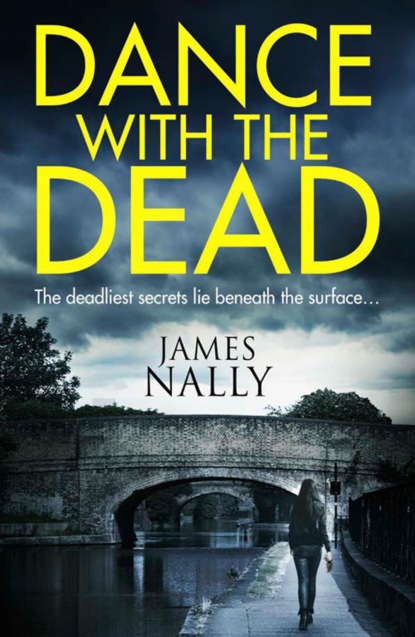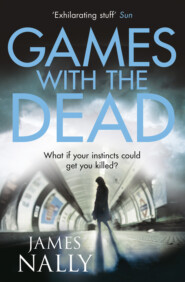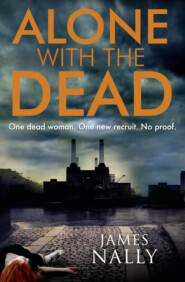По всем вопросам обращайтесь на: info@litportal.ru
(©) 2003-2024.
✖
Dance With the Dead: A PC Donal Lynch Thriller
Автор
Год написания книги
2018
Настройки чтения
Размер шрифта
Высота строк
Поля
‘There’s scant enough dignity in death without it being reduced to panto,’ harrumphed Edwina.
She looked at me conspiratorially. ‘Now, let’s turn our attention to the notable features not for public consumption. You may have noticed the penny-sized gouges on her fleshier parts. At first I thought she had been hacked at by something very pointed, like an ice pick. But on closer inspection, I could make out very tiny but very sharp serration marks. I’ve only ever seen wounds like this on a drowned body, when fish have nibbled at the flesh. I need to do more tests but it’s very strange.’
‘Maybe they kept her body somewhere with rats or mice?’
‘I’d recognise rodential incisions. Also, she bled from these wounds,’ she said, looking at me gravely. ‘She was alive when they occurred.’
She throat-coughed back her composure: ‘There are a few other elements that may interest you, detective.
‘We removed very tiny fragments of unidentified matter, deep red in colour, from inside those hammer wounds to her skull. They look to me like flecks of paint, but are almost certainly too minute to test.
‘We removed an A3 battery from her anus. The significance of its insertion is not my department. However, my assistant reminded me that we came across the same thing about three months ago. The victim on that occasion had been a street prostitute named Valerie Gillespie.’
She fixed me with a hard stare and sighed. Pathologists are natural storytellers. She’d been building up to this final twist.
‘Between the clasped thumb and index finger of this woman’s right hand, we found human hair, just a few strands.’
I couldn’t stop my mind skidding across assumptions like a well-hurled pebble: ‘This has to be the hair of her killer, surely Edwina? Or someone party to her murder? An accessory?’
She eyed me as you might an over-exuberant toddler. ‘Hair identification isn’t an exact science. Far from it. There could be hundreds of people out there whose hair follicles would appear very similar to these under a microscope. However, it may prove useful for confirming or eliminating a suspect.’
‘I see,’ I said, nodding solemnly as if mentally storing her points. But I’d already drawn my own cast iron conclusions. The victim here had clearly known her killer. The hair belonged to someone in her circle. Find the owner of the hair clasped between her stiff dead fingers, and we’d find her killer.
Chapter 3 (#u8c4e256d-a360-58f7-b0a3-8ef9eed9a2c4)
Brownswood Road, London N4
Saturday, April 3, 1993; 11.10
As I emerged from the tent’s gloom, the mid-morning glare scored my tired eyes and tasered that dormant hangover back to life. A familiar knot of aching dread tightened behind my navel. What if I’d missed the chance to catch this killer before he’d struck here? With merciless certainty, my gut was telling me I must have …
This woman may not have been a streetwalker, but she’d met a wretched, protracted, depraved end just like the others. It had to be connected.
‘The Others’.
That had become the Cold Case Unit’s by-word for the unsolved female murders that no longer had an incident room or an officer attached. In other words, the cases that had been quietly wound down. Of course, officially Scotland Yard doesn’t close the file on any unsolved crime. But these particular investigations had clearly been shelved, the victims forgotten, all ties cut. Only a walk-in confessor, a knockout new witness or a DNA breakthrough could reboot these cases now.
Not that anyone was bothering to explore any of these possibilities …
I stumbled across this stash of ‘dead’ files while reviewing unsolved female murders in the capital over the past decade. It felt like uncovering an unmarked mass grave. I couldn’t understand how this could happen – until I met the victims.
They were all young women estranged from their families and communities, often just out of care or prison or a mental institution. Most had been hooked on smack or crack, lost souls with nothing but their bodies to sell. Desperate skanks. Nobody noticed they were gone until their bodies turned up; rent asunder like the carcasses of Christmas turkeys. No witnesses, no murder weapon, no DNA, no media interest, no relatives making noise.
No motive.
I also discovered scant will to catch their killers. The murder of a tom somehow didn’t count, especially a crackhead street cat. They knew the risks. As if somehow their grim demise had been inevitable. Deserved. Without the other standard pressures – raucous relatives, meddling media, panicking public – these investigations had been expediently binned at the earliest opportunity.
After all, resources were stretched and Scotland Yard could divert much-needed detective brainpower elsewhere, to serve more pressing political agendas. Like the highly publicised murders of middle-class, ‘respectable’ women.
However, when I analysed these ‘dead’ case files, I made a series of alarming discoveries. For starters, the sick tableau of depravity endured by ‘The Others’ proved that a number of woman-hating killers were on the loose in London right now, who would kill again soon.
I raised the alarm with my boss, DS Barrett. He didn’t listen.
I drew up a list of men who frequently used streetwalkers and had convictions for violence against women, explaining that any one of these cretins could escalate to become tomorrow’s notorious serial killer.
He didn’t listen.
Then, a few months back, a notorious crime that had grown into a national media event changed everything. Michael Sams had been convicted of the kidnap of estate agent Stephanie Slater, who police managed to free after a sensational, high-profile manhunt.
Sams confessed that, a year earlier, he’d carried out ‘a dry run’ by abducting 18-year-old Leeds prostitute Julie Dart and forcing her to write a ransom note to her boyfriend. Sams knew Dart’s family couldn’t afford to cough up the 150k demand, so he killed her anyway. But the case proved my ‘canary in a coalmine’ theory – that dangerous men were willing to ‘practise’ their most carnal desires on easy-meat prostitutes first.
DS Barrett suddenly realised that the men we’d failed to catch for these prostitute murders may strike again – and they might not restrict their depravity to crack-addled streetwalkers next time.
Now he listened.
He set me a task: comb through every one of these ‘dead’ files, highlighting all potential suspects and links to other cases.
He then set me another: if a breaking female murder appears to share any link or connection to an unsolved case, attend the crime scene.
It hadn’t happened, until today.
Now I felt convinced that whoever tortured and killed this poor woman had struck before. He’d escalated to this. That blade of dread twisted in my guts. What if I’d failed to spot him in the old files, leaving him free to kill her?
What if I’d missed the chance to stop him?
It felt a strong possibility. After all, I’d spent months poring over those old case files yet failed to level a criminal charge against a single suspect.
I must have missed him …
My angst turned to agitation at the sight before me; Fintan at the polythene perimeter, chatting animatedly to the crime scene officer I’d fallen head-over-heels for earlier. Even from this distance, I could tell he’d turned on the old charm cannons full blast.
‘Here he comes, Dick Fosbury,’ he called towards me, and she cackled mercilessly, shrivelling my insides. I knew I had to hit back, so faked a serene smile while scrabbling about desperately for a witty riposte.
‘I think you’ll find I’m no flop,’ I heard myself declaring to the suddenly silent planet. That wiped the smile from her pretty face. Fintan glared at me aghast.
‘Donal, this is Zoe from the Forensic Science Service. I’ve been telling her all about the important work you do, for the Cold Case Unit.’
I checked to see if he was taking the piss. Had the flirting couple decided to gang up on me again, for another cheap laugh? I wouldn’t be falling into their trap this time.
‘I’m doing my best to get the hell out of there, to be honest,’ I mumbled, clearly wrong-footing both of them.
Fintan ploughed on, undeterred. ‘Zoe’s been telling me what happened to that poor girl in there. We’ve just been saying, whoever did this isn’t a first-time offender. As this is a red-light zone, he’s probably targeted working girls in the past.’
‘That’s speculation,’ I protested.
‘So, I’ve been explaining to Zoe how you’ve spent the past few months analysing unsolved prostitute murders, and that you may well have a head start in tracking down the person responsible.’
I would’ve disputed this too, had I managed to get a word in edgeways.







